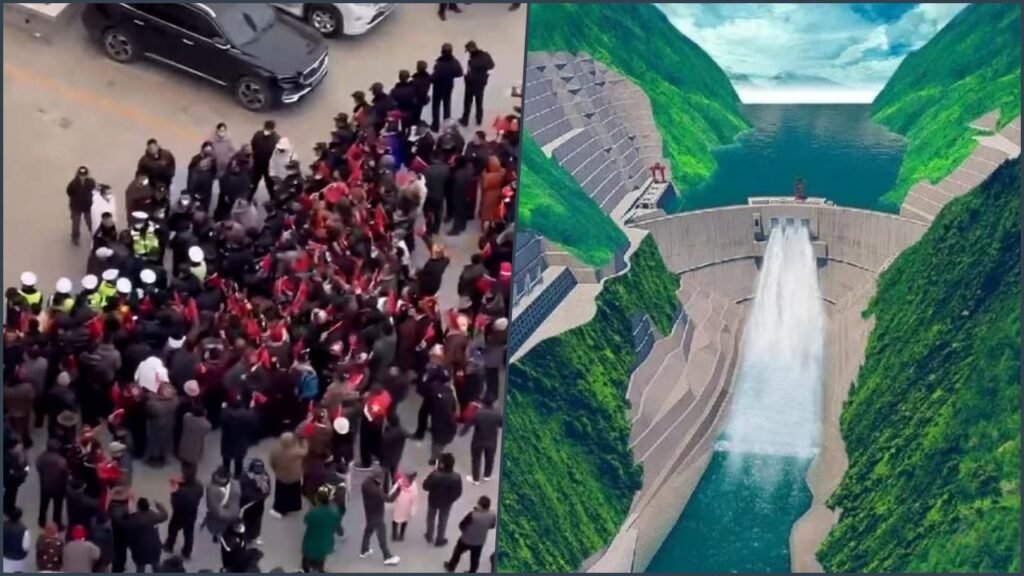
Beijing: A massive dam project on the Drichu River, also known as the Jinsha River, has sparked widespread protests and arrests among Tibetans in China’s south-eastern Sichuan province. The project, which is part of a 13-tier hydropower complex planned by the Chinese government, threatens to submerge six ancient Buddhist monasteries and displace thousands of villagers from their ancestral lands.
According to Radio Free Asia, more than 100 Tibetans, including monks and nuns, have been detained by security forces since February 14, when they began to demonstrate against the construction of the 2,240 MW Gangtuo hydropower station. The station is located in the upper reaches of the Yangtze River, one of China’s most important waterways and a source of life for millions of people.
The protesters, who hail from Wangbuding township of Dege county in Garze Tibetan Autonomous Prefecture, have defied the strict restrictions and surveillance imposed by the authorities in the Sichuan and Tibet regions. They have gathered outside the Dege County Town Hall and other government offices, demanding that the dam project be halted and their cultural and religious heritage be respected.
Some of the protesters have been injured and hospitalized due to the violent crackdown by the police, who have used water cannons, pepper spray, and tasers to disperse the crowds. Videos of the protests have shown monks and nuns bowing and pleading with the officials not to destroy their sacred sites and homes.
The state-run Global Times newspaper has reported that the Gangtuo hydropower station is part of the US$4.6 billion Yebatan hydropower project, which would be the largest in the upper reaches of the Jinsha River. The project would affect the Wonto and Yena monasteries, which date back to the 13th century and contain precious murals and relics, as well as the Vontu, Khardho, Rebten, Gonsar, and Tashi monasteries in Dege county and Chamdo township. The project would also force the relocation of about 2,000 people from the Upper Wonto and Shipa villages, where they have lived for generations.
The dam project is part of China’s National Development and Reform Commission’s 2012 plan to build a 13,920 MW hydropower complex on the Drichu River, which flows through the Tibetan plateau and is considered sacred by the Tibetans. The plan has faced criticism from environmentalists and human rights activists, who have warned of the ecological and social impacts of the massive construction.

The Tibetans, who have a distinct culture and religion influenced by Tibetan Buddhism and the indigenous Bon tradition, have long faced oppression and discrimination under Chinese rule. They have been denied their basic rights to freedom of expression, religion, and self-determination. Many Tibetans have resorted to peaceful protests and self-immolation to voice their grievances and aspirations. The Chinese government, however, has responded with harsh measures and propaganda, accusing the Tibetans of being separatists and terrorists.




















































